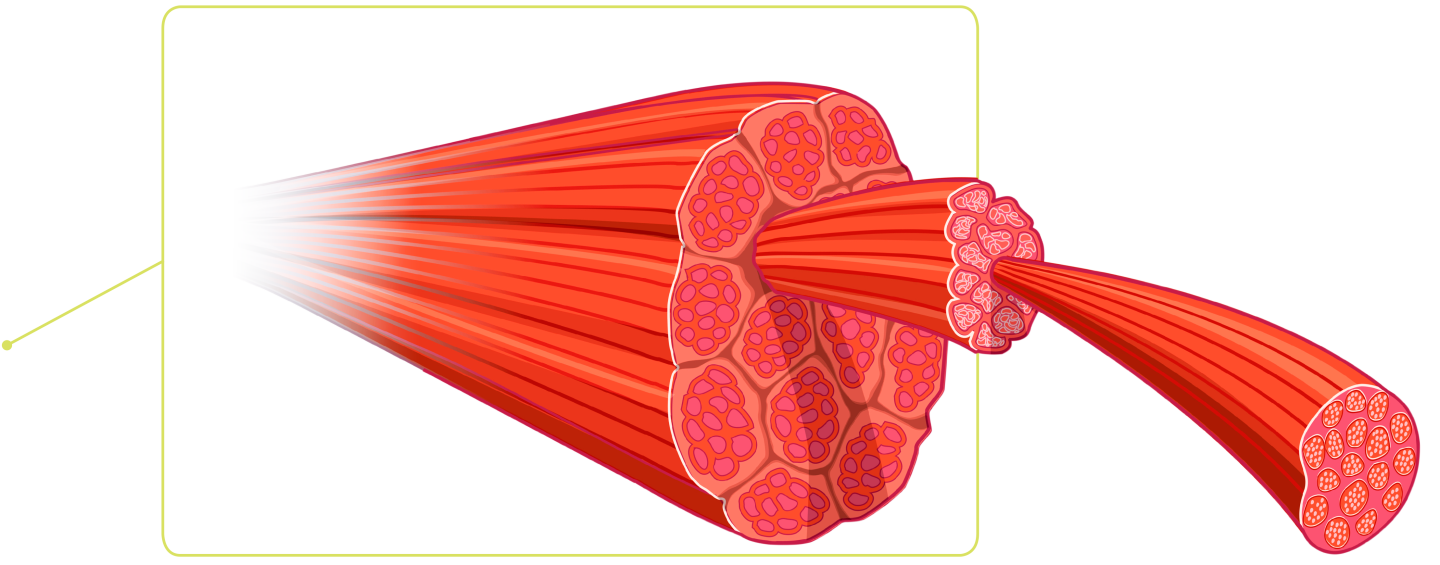Muscle Fibers
 The body has several types of muscle or muscle fibers. The one we are talking about here is the skeletal muscle. These are the muscles connected to the skeleton and are part of the mechanical system that moves the body. These are the muscles we want to grow and get ripped.
The body has several types of muscle or muscle fibers. The one we are talking about here is the skeletal muscle. These are the muscles connected to the skeleton and are part of the mechanical system that moves the body. These are the muscles we want to grow and get ripped.
These muscles are composed of two types of muscle fibers: fast twitch and slow twitch. Fast-twitch fibers are also called white muscle and the slow-twitch muscle is called red muscle.
“Twitch” pertains to the speed of the muscle’s contraction during its exertion. These two muscle types are differently activated depending on the type of your activity. The composition of your muscles can be altered to contain more fast-twitch or slow-twitch muscle.
We are mostly interested in the fast-twitch muscles. If you want your body to become ripped, strong, or huge, or bodybuilder’s type or athletic – you need to train in a way that activates the fast-twitch muscles. Training this muscle type is much more effective for growing muscles and burning fat than training the slow-twitch muscles.
 Composition of muscle
Composition of muscle
Each bundle of muscle fibers is composed of fast-twitch and slow-twitch fibers. Everyone has a certain ratio of these two types of fibers. This ratio can be influenced upon for the benefit of either slow- or fast-twitch fibers, through certain types of exercise. The type and intensity of training determines which type of muscle fibers will dominate in your body.
Red muscle fibers
Red fibers are called slow-twitch because they are made for endurance. These muscles are used for sustained activities. They contract slower but allow for longer period of exercise. Marathon runners, cyclists and rowers depend largely upon red fibers. These fibers are literally red in color because of the many blood vessels that are intertwined with them. The blood allows these fibers to produce energy for sustained periods of time. For example during low-intensity aerobic or low-intensity weight lifting, these muscles are activated. It is not possible to build more muscle mass through exercises which activate mainly the red, slow-twitch fibers. Red fibers are very limited in their potential for growth. White fibers are not.
White muscle fibers
The white muscle fibers are called fast-twitch as they contract in less than hundredth of a second. Their contractions are enabled by oxygen which also contributes to their white color. Sprinters can have up to 80% more white fibers than red as their running relies mainly on white, fast-twitch fibers. White fibers fatigue more easily than red fibers. Thus white fibers are trained best with explosive power and speed such as weight lifting with heavy weights with less repetitions or sprints. The muscle mass you see in bodybuilders for example, is composed mainly of white fibers.
Fat burning and building muscle
Fast-twitch muscle fibers burn more fat during and after your workout. A workout that activates mainly fast-twitch fibers is the intensive workout as it requires the use of power and speed. As a result of this, the body secretes more growth hormone and testosterone. They burn excess fat and build muscle. This causes your muscles to grow and burns fat long hours after finishing your workout.
Lifting light weights or doing aerobics for example, activates slow-twitch fibers and this is beneficial to your cardiovascular and respiratory health but not for the growth of muscle mass or significant fat loss.
Fast twitch and your age
As a person grows older, more fibers become slow-twitch. It results in decrease of your muscle mass and slower metabolism. That is, if you sit back and do nothing.
This can be altered with workouts which activate fast-twitch fibers. Not only the conversion from fast- to slow-twitch will be counteracted, but you will maintain and increase your current muscle mass, you’ll prevent gaining more fat and you’ll be more active and more energetic.
Training direction

Depending on the results you desire, you can pinpoint what kind of exercises you need and how long each should take. If you want to exercise for endurance or sustained periods of activity, you should train your slow-twitch muscle fibers. They are trained with lower intensity workouts, light weights, slow movements and longer duration. To train your fast-twitch muscles you need to do explosive activities, for example sprints or strength training with heavy weights, with less but faster repetitions.






